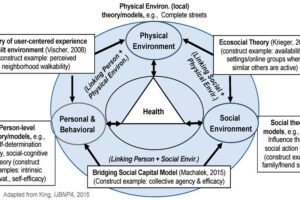1. (c) Conservation and breeding centres are important components of the Action Plan for Vulture Conservation, 2020-2025. Why? 10Marks (PYQ/2024)
Answer:
Introduction:
Vultures play a vital role in ecosystems by efficiently disposing of animal carcasses and limiting the spread of diseases. However, over recent decades, their populations have plummeted due to factors such as the use of toxic veterinary drugs (e.g., diclofenac), habitat degradation, and environmental contaminants. The Action Plan for Vulture Conservation (2020–2025) has been formulated to combat these threats via a dual strategy comprising in-situ conservation measures (e.g., establishing “vulture safe zones”) and ex-situ interventions through dedicated breeding centres. Developed by environmental agencies such as the Ministry of Environment, Forest and Climate Change (MoEFCC) in India, the plan is aligned with global biodiversity commitments and One Health objectives, integrating human, animal, and ecological wellbeing.
2. Concepts
Several key concepts underpin the rationale for incorporating conservation and breeding centres into the Action Plan:
- One Health Framework: Recognizes the interconnectedness of human, animal, and environmental health systems. Breeding centres offer controlled environments to study vulture health, reproduction, and genetic diversity, ultimately informing broader ecosystem management.
- Disease Ecology & Environmental Safety: Vultures safeguard public health by preventing carcass-borne disease spread. Conservation centres, through rigorous environmental monitoring, ensure that vultures reside in toxin-free habitats.
- Spatial Planning & Network Theory: Drawing on Central Place Theory and Spatial Diffusion Models from Geography Optional, conservation and breeding centres are envisioned as nodes—strategically distributed across regions—to facilitate knowledge diffusion, resource sharing, and coordinated management. These centres serve not only as research and breeding stations but also as “growth centres” whose influence radiates outward to peripheral regions.
3. Analysis: Why Centres Are Essential
- Protective In-Situ Management: Conservation centres create “vulture safe zones” where persistent monitoring, habitat management, and public awareness campaigns help mitigate ongoing threats. Using GIS-based spatial mapping, these centres track environmental parameters (e.g., toxic residue levels, land-use patterns) to ensure that local habitats remain conducive to vulture survival.
- Ex-Situ Genetic Preservation: Breeding centres function as genetic repositories, safeguarding vital genetic diversity through controlled breeding programmes. Under conditions where wild populations suffer critical declines, these centres can generate surplus individuals for re-introduction into nature—thus acting as an insurance policy against population collapse.
- Research and Adaptive Management: Both types of centres facilitate in-depth research on reproductive biology, disease management, and ecological interactions. Data from these centres feed into adaptive management strategies, ensuring that policies evolve in response to emerging challenges. Regular monitoring using epidemiological surveillance networks further strengthens outbreak prevention and healthy ecosystem dynamics.
4. Perspectives
- Limits to Growth vs. Conservation Expansion: Geographic and ecological studies suggest that ecosystems have thresholds beyond which degradation accelerates. By establishing conservation and breeding centres, authorities aim to push back these limits through proactive intervention.
- Scientific Determinism vs. Policy-Led Conservation: While predictive models (e.g., ecological forecasting, spatial diffusion models) indicate potential catastrophic declines without intervention, policy-led strategies—supported by legally binding frameworks such as the WHO International Health Regulations—can guide earlier, preventive action.
5. Models & Theories
- Central Place Theory: Just as urban centres in this model serve as resource hubs, conservation centres act as focal nodes offering specialized services (research, monitoring, breeding) that extend benefits over a broader hinterland.
- Spatial Diffusion and Gravity Models: These models help in designing an optimally connected network of centres. They assess how the “mass” (capabilities and resources) of one centre influences surrounding regions, ensuring efficient spread of best practices and rapid response during environmental crises.
- Landscape Ecology & Patch-Corridor-Matrix Concept: This theory supports the notion of strategically placed centres that maintain ecological connectivity and ensure gene flow between isolated vulture populations.
6. Laws & Policies
- WHO International Health Regulations (2005): Set the stage for robust global pathogen and exposure monitoring—which parallels the need for regular environmental surveillance in vulture habitats.
- FAO and UN Biodiversity Frameworks: These further mandate integrating cross-sectoral approaches, such as One Health, which underpin the establishment of such conservation networks.
7. Case Studies
- China’s Vulture Safe Zones (2023–24): Demonstrates how structured habitat management and intensive monitoring reduce mortality risks and improve breeding success rates.
- US-Based Vulture Breeding Initiatives (2023–24): Genomic sequencing and controlled breeding programmes have enhanced early detection of potential health issues, underscoring the critical need for ex-situ conservation strategies.
Conclusion
Conservation and breeding centres are indispensable elements in the Action Plan for Vulture Conservation, 2020–2025. By leveraging spatial planning theories, advanced monitoring techniques, and robust cross-sector policies, these centres provide the integrated, proactive approach needed to safeguard vulture populations. Their role in creating safe zones, preserving genetic diversity, and disseminating innovative conservation practices is key to ensuring that these vital scavengers continue to contribute to ecosystem resilience and public health for generations to come.


